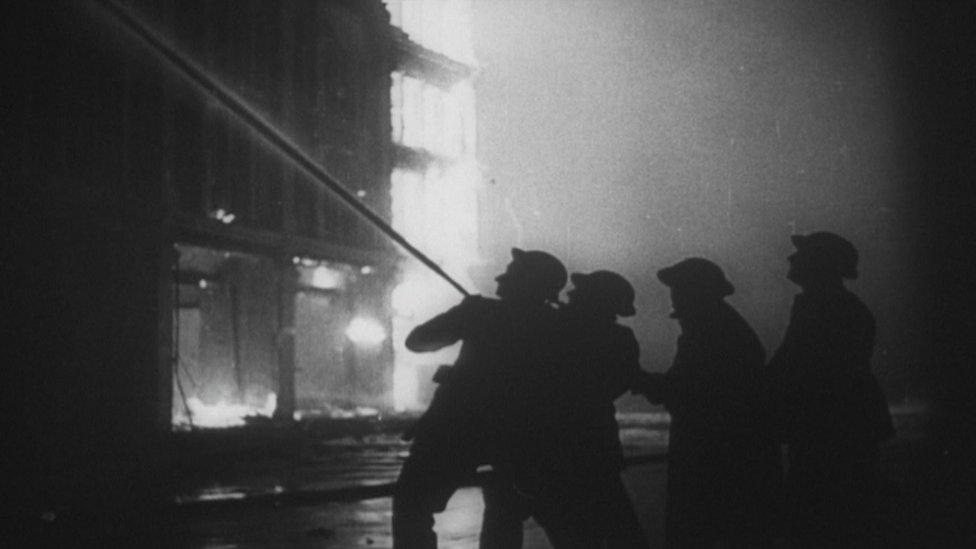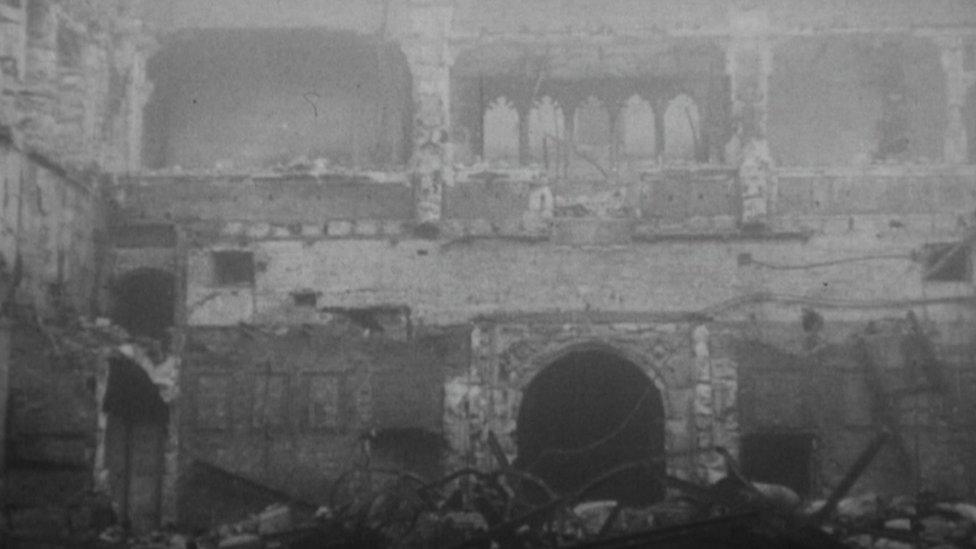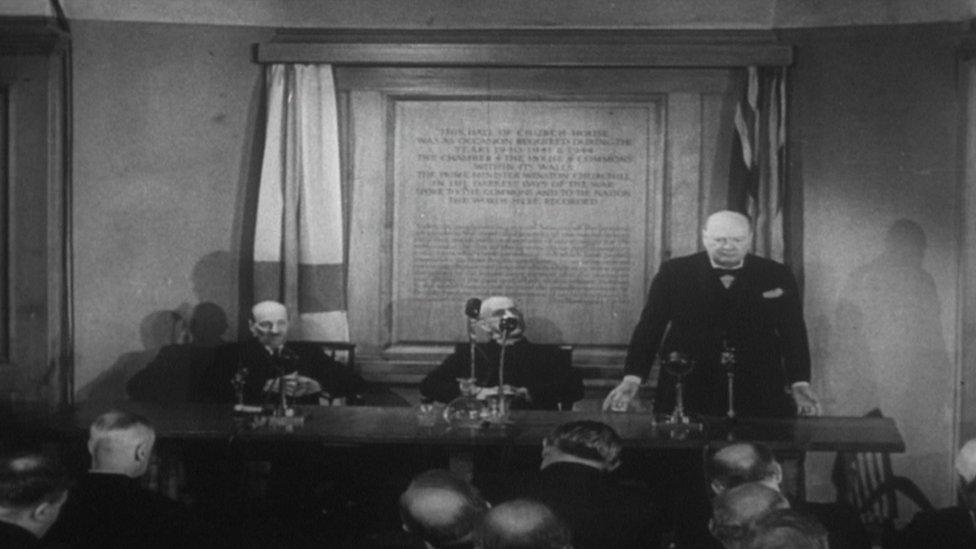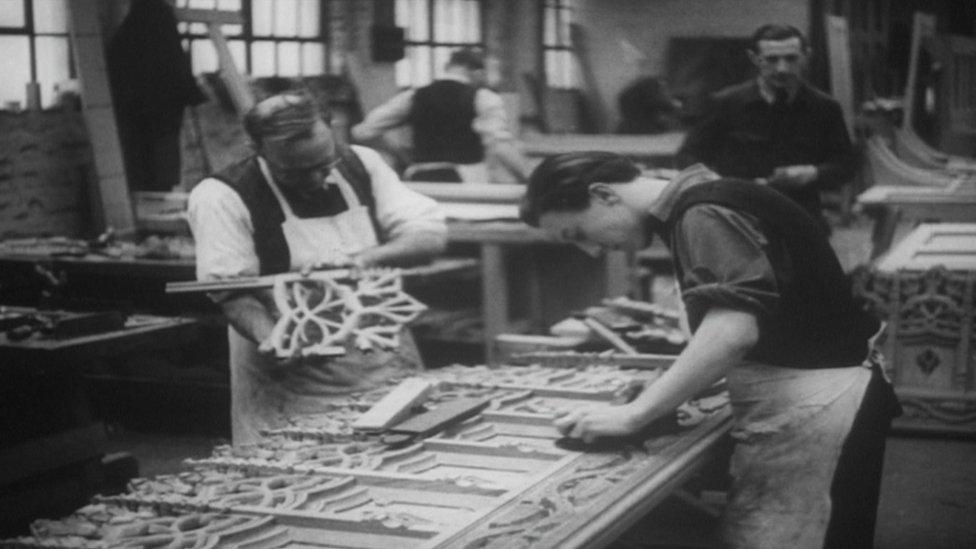The day the Commons came back from the Blitz
- Published
The night the Commons was bombed - a clip from BBC Four's The Debate Continues
The Palace of Westminster, home to both Houses of Parliament, is an iconic British landmark that exudes history from its spot on the River Thames.
But, like the rest of the country, it felt the effects of World War Two.
In the thick of the Blitz in the May of 1941, the Commons was destroyed by an air raid, leaving MPs without a home in the midst of a national crisis.
But, as we well know, you cannot keep British parliamentarians quiet for long...
Monday 26 October 2020 marks the 70th anniversary of their return to the Palace of Westminster.
And BBC Four has revived a documentary - first aired in 1950 - to tell the full story of how the Commons fell and rose again from the ashes.

Firefighters were filmed tackling the blaze in May 1941
The bombing took place overnight on 10 and 11 May and saw both the Commons chamber and the roof of Westminster Hall - the oldest part of the Palace of Westminster - set ablaze.
Fire services decided they could not save both and focused their efforts on Westminster Hall, leaving the Commons to be totally destroyed.
According to UK Parliament historians, the House of Lords was also struck by a bomb, but it passed through the floor of the Chamber without exploding.

The Commons was destroyed by the bombing
Unbeknownst to the public, MPs were already holding their daily business in the nearby Church House - the headquarters of the Church of England - during the war, as they were sure Parliament would be a target for the German air force.
In fact, Prime Minister Winston Churchill made some of his most historic speeches, not at the Commons despatch box, but in the secret location.
After the bombing, the Lords joined them, and the two Houses carried on with their work in the secret location.
In June 1941, MPs moved into the House of Lords and peers moved into the Robing Room next door, but again, this was kept quiet so as not to attract the attention of the enemy.

Wartime Prime Minister Winston Churchill (right) and his successor Clement Atlee (left) returned to Church House after the war to thank the organisation
Meanwhile, work was going on behind the scenes to rebuild the Commons to reflect its original glory, with a few little tweaks - including microphones, speakers and air conditioning.
Gifts from across the Commonwealth, such as new doors from India and Pakistan, and a new Speaker's chair from Australia, arrived to fill the renewed chamber.
And, after almost a decade, on 26 October 1950, it was ready for MPs to return.

English oak was specially cut to re-make the famous panelling in the Commons
A huge ceremony took place to mark the occasion.
As well as speeches from the Speakers of the Commons and Lords - and the attendance of 29 speakers from around the Commonwealth - three generations of the Royal Family were present.
They included King George VI and the future Queen, Princess Elizabeth.
King George VI welcomes back returning MPs
The King also gave a speech to the throngs of politicians in Westminster Hall - the only monarch to address both Houses since Charles I - promising a bright future for the unshakeable democracy of Britain.
And ever since, the Commons has remained home to the elected members of the land.